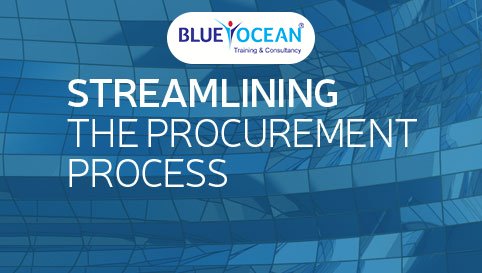Free Webinar on Procurement Streamlining

Blue Ocean Academy has conducted a Procurement and Supply Chain webinar on the topic ‘Procurement Streamlining’. It was facilitated by Dr. LeRoy H. Graw, the President and CEO of the American Certification Institute and the International Purchasing and Supply Chain Management Institute. Around 180 professionals around the world attended the webinar.
Following are the important points discussed in the webinar:
Supply chains have been disrupted by COVID-19 pandemic with many companies having to re-evaluate their own supply chains. The most common disruptions include travel restrictions, reduced demand for products due to uncertain future, reduced workforce, the shutdown of factories and the stoppage of import and export.
The possible response to COVID-19 impact
- Determining product availability: Most companies have experienced disruptions in their supply chains because of transportation restrictions related to COVID-19.
- Find hidden value in your supply chain: It is possible to find a company in the supply chain that can distribute, fabricate, and provide services rather than looking at three different companies to participate in the supply chain.
- Look for more ways to save: Companies must look to their contracts to see if prices are locked in. If not, companies need to restart negotiations on pricing. Purchasing parts and materials from fewer vendors also reduce the number of shipments that you need to order, receive, inventory, and invoice.
- Monitor supplier performance: Companies started to move to regional supply chains – or at least contemplate regional supply chains.
- Freight Limitations: Companies with workers that travel frequently are also experiencing issues with the country of origin travel bans and increased scrutiny and entry denials at ports of entry.
Planning and Strategy Development for Streamlining of Procurement
Proper planning and a meticulous strategy can help organizations to streamline procurement in the current situation. Risk analysis has now become the most important part of planning and strategy development. Organizations need to conduct a country-based risk and opportunity analysis especially considering the hindrance caused in the global trade due to the dependence on China.
They should also conduct a risk analysis of their suppliers. They can avoid outdated terms with suppliers, do intensive due diligence on suppliers, take time to understand the expectations of the suppliers, and insist on truthful branding and marketing including supplier global locations and their locations.
Lean and Agile Procurement Management
Lean procurement management is the strategy that focusses primarily on the removal of waste from procurement to achieve the lowest total cost to the members of the supply chain system and organization as a whole. Agile procurement is a fast-moving, adaptable and robust system capable of rapid adaptation in response to turbulent and volatile requirements and uncertainty in demand for services as a result of changing customer requirements.
Characteristics of Lean procurement
- Minimization of waiting time
- Ordering goods and services only when needed
- Zero defects in documents
- Synchronized processes
Dr Graw’s three important additions are:
- Prequalification of bidders
- Careful selection of appropriate procurement method and contract type
- Careful attention to procurement and contract administration risk
Characteristics of agile procurement
- Excellence in forecasting demand for procurement services
- Standardization and simplification
- Labor flexibility
Procurement Process Flowcharting and Analysis: A Critical Planning and Organizing Process
Procurement has a profound effect on the organization. The cost of acquisition affects the bottom line or budget of the organization. Most of the procurement and supply chain processes in organizations have redundancies and inefficiencies which become evident only when you observe the processes. Flowcharting is a tremendous communication device and critical to the success of your streamlining efforts.
Eliminating Non-Value Added Activities
Non-value added activities in any process are considered ‘waste’ which usually adds costs but not value. The definition of waste must also include excessive time spent on performing a process. The goal of a procurement manager is to enable better, faster and cheaper procurement while maintaining quality and delivery performance.
Two Categories of Strategy
Over a period of time, procurement departments have progressed from a primary focus on the first category of strategy to an equal or greater weight on the second. Category Management, Spend Analysis and Spend Management are current World Class Practices.
- Strategy for the purchasing function: This sets the direction and scope of the purchasing function over the long term. Ideally, it matches the function’s resources and capability to the changing environment, and in particular to the needs of the organization and internal clients, external markets and best-practice sourcing approaches.
- Strategy for a discrete area of spend: This sets the direction and scope of a defined and discrete area of spending over the medium term. Ideally, the spend matches the immediate and future needs and wants of the organization and its end customers with the current and potential future marketplace. This process is facilitated by the use of Spend Analysis and Management.


